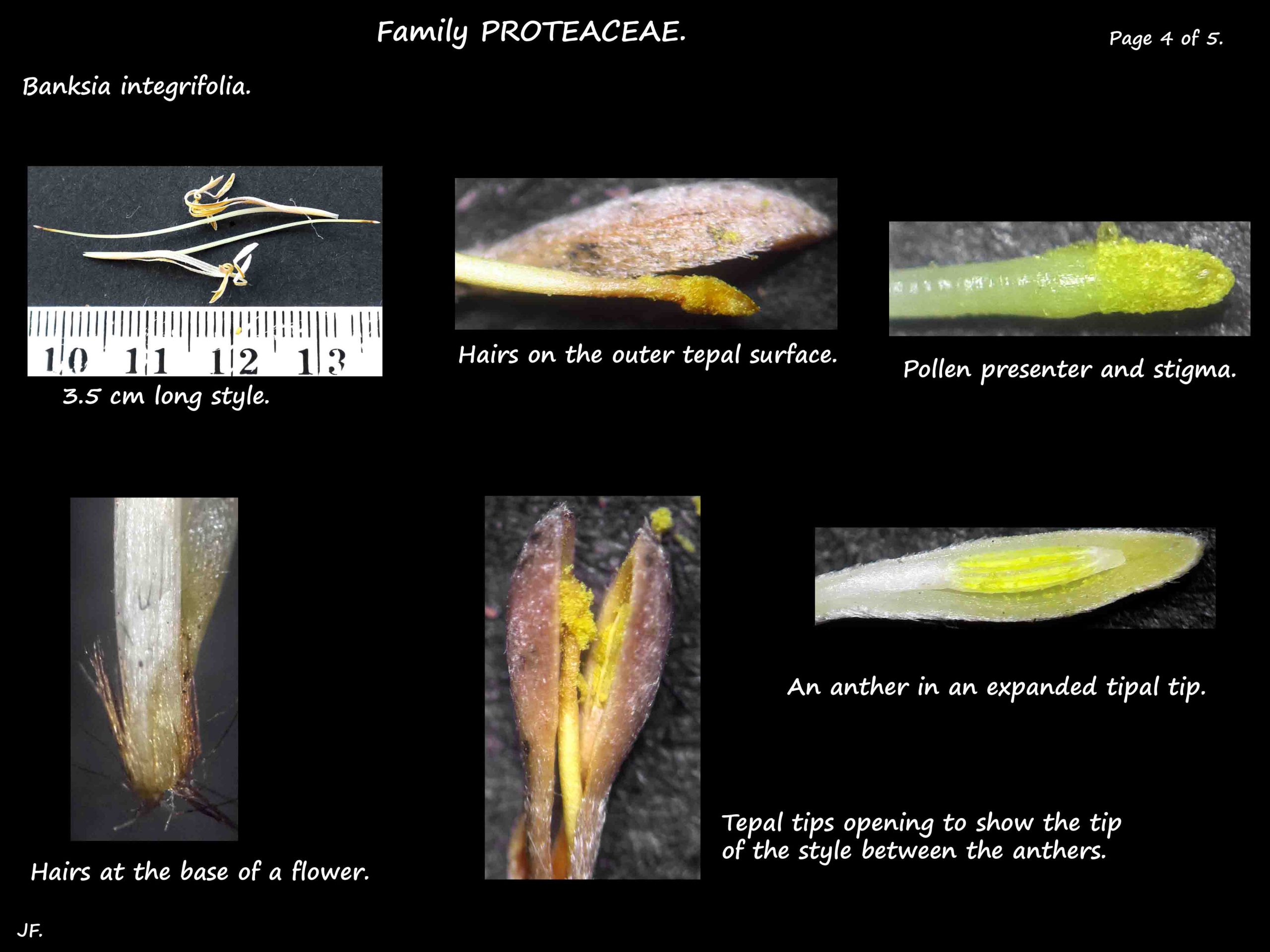Banksia integrifolia.
Family Proteaceae.
The Coastal banksia, found in Queensland, is widely cultivated.
It is a variable species but most often seen as a tree up to 25 m high.
In exposed areas it is reduced to a small tree or even a shrub.
The bark is fissured or tessellated and young growth is very hairy.
Adult leaves, on petioles up to 1 cm long, are arranged in whorls of 3 to 5.
They are narrowly obovate or elliptic with a blunt or pointed tip with a mucro.
They can be seen from 3 to 23 cm long by 0.5 to 3.5 cm wide.
The edges are smooth.
They are dark green above and white underneath due to a dense layer of hairs.
Juvenile leaves are larger, wider and have a few teeth.
Inflorescences are terminal spikes of variable height (5 to 20 cms).
The involucral bracts at the base are up to 1 cm long.
Hundreds of paired flowers are densely arranged in a spiral along the central axis.
The 4, initially fused tepals, are greenish in the bud then a pale yellow.
They are up to 3 cm long with hairs on the outer surface.
The 2 mm anthers lie in the expanded tepal tips.
When the roughly 3 cm long style breaks free of the tepal tube it straightens.
The fruit are follicles, initially green and hairy then dark grey.
In each the 1 or 2 winged seeds are surrounded by a seed separator.
There are 3 subspecies with two occurring in S. E. Queensland.
In B. integrifolia subsp. integrifolia the leaves are 4 to 10 cm long with flat, dull green blades.
B. integrifolia subsp. compar has shiny leaves mostly 10 to 20 cm long with flat or wavy edges.
The third subspecies is B. integrifolia subsp. monticola.
J.F.






